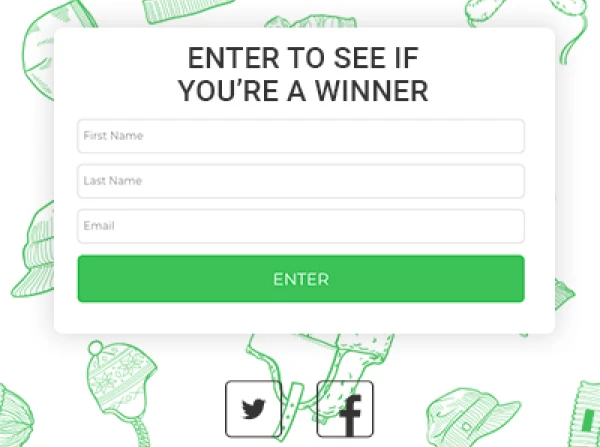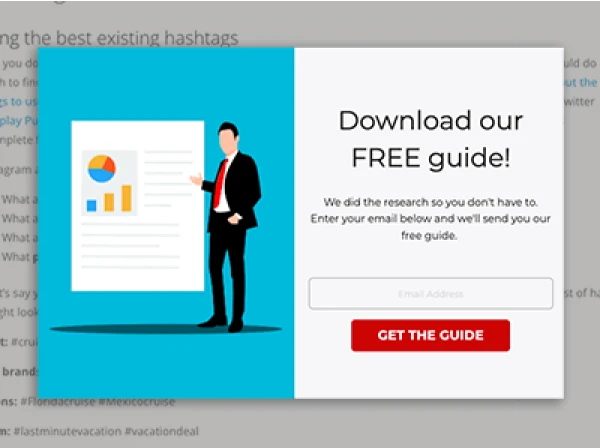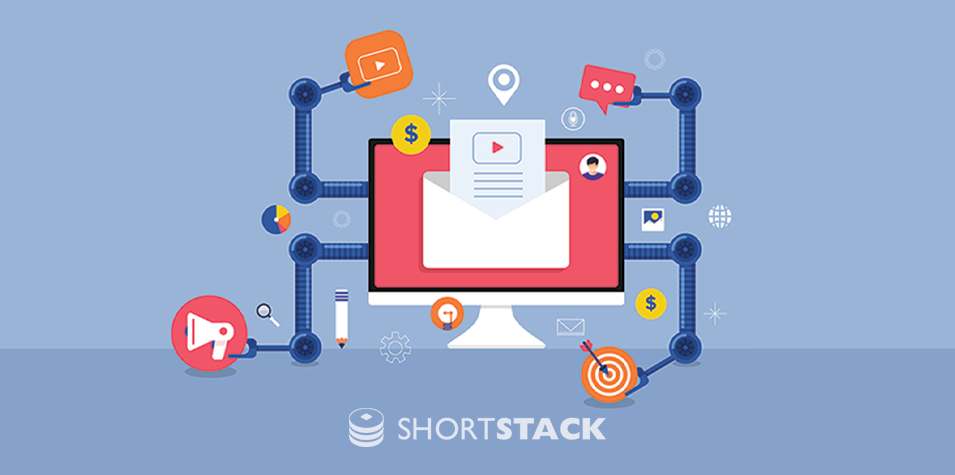If you’ve decided to host a contest or giveaway - great! - you’ll capitalize on a myriad of benefits including a boost in engagement and brand awareness. But some of these benefits will depend on how you execute your contest. Like many things, contests can be fairly simple to set up, but to be successful, they require a bit of planning and decision making on the forefront.Before you do anything else, one thing you’ll need to decide on is your contest’s goal. Are you looking to build your email list, acquire UGC, promote a new product? This important first decision will have a heavy impact on the logistics surrounding your campaign. For example, are you a brewery looking to hype your new beer release? It will be important to target those over the age of 21. How are you going to do that?In the case of this hypothetical brewery contest, you’ll need to collect data for each entry. So instead of simply collecting likes and comments on a Facebook post, you’ll need to build a landing page with an entry form that requires a date of birth or age field. But how do you know which means of entry collecting is right for you? In this article, we’ll look at all the ways your online contest can collect entries as well as the benefits and drawbacks of each.
Collect Likes/Reactions on Facebook
Benefits: lowest barrier to entry, importable for winner selection, potential to increase fansDrawbacks: lowest engagement, no customer conversion valueAbout six years ago, Facebook altered their promotion guidelines to allow post comments and likes as contest entries. This opened the floodgates for something we now call a Timeline contest. In other words, you can create a post that is used as a giveaway and award a prize to one lucky user who commented on or liked the post.When setting up a Timeline contest, you can make entering as easy as “Like this post to enter.” Clicking a like button doesn’t get much easier in the way of entering to win a prize. This can result in more entries. However, don’t be tempted to keep things this simple without considering a few of the drawbacks. For starters, you’ll lose out on the potential to engage participants. One could argue that clicking a like to enter a giveaway (i.e. not because you were organically inspired to click a like as you would on a picture of your grandkid, or even a puppy) is about as engage-less as it gets.To get a little more engagement from participants, use Facebook reactions as a voting mechanism.
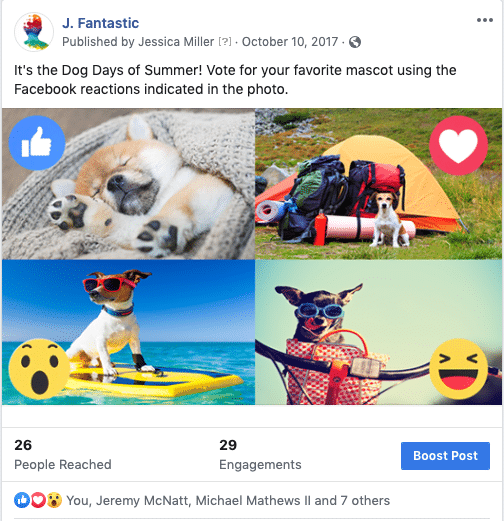
Use Facebook reactions to get more engagementA voting poll is a fun way to gauge a popular opinion from your audience, and will engage participants through the decision making process a little bit more. Picking a winner is easy to boot - the likes (including the reactions) can all be imported into ShortStack to choose a winner at random.
Collect Comments on Facebook and Instagram as Entries
Benefits: low barrier to entry, potential to increase fans and followers, importable for winner selectionDrawbacks: low customer conversion value, low engagementRequiring a comment as a means of entry is another slight increase on the engagement scale when compared to likes and reactions. Plus, a “Comment to Enter” contest is a little more versatile. Have participants answer a question, or post a funny photo for a “capture this” contest. You can even collect votes on comments by asking voters to vote with a like on the comment they want to win.“Comment to Enter” contests are also hugely popular on Instagram because the rules are a bit more lax. Oftentimes, Instagram giveaways will require a few steps to enter the contest including tagging one or more friends in a comment and following one or more Instagram profiles - a big no-no on Facebook.

“Comment to Enter” contests are also hugely popular on Instagram because the rules are a bit more lax.Collecting entries from a Timeline post has its perks. For starters, setting up the contest and the barrier to entry for participants is still incredibly easy - about as easy as asking for likes or reactions. Typically, the less friction there is between a contest and a potential participant, the more entries that contest will get. Which makes sense. Would you rather film and edit a short video or take two seconds to comment on a post?This type of contest has the potential to boost fans and followers on your social media profiles. On Facebook, they’ll obviously be liking or commenting on your post but it’s against Facebook law to ask them to like your Page too. However, it’s likely you’ll get some organic likes when driving traffic to your brand via a contest or giveaway - especially if you run them often.On the flip side, there are also a few drawbacks to using comments and likes as contest entries. The drawbacks aren’t necessarily in the like and comment entries themselves, but instead in what you’re missing out on by not collecting other data.Just as Timeline contests are the most “primitive” way to run an online contest, the data you collect is just as basic - a name and an Instagram handle or Facebook username. Apart from individual direct messages, there isn’t a great way to communicate with contest participants after the contest is over, i.e. you can’t add them to a mailing list, send them coupons or offers, or invite them to participate in future giveaways.
Collect hashtagged entries (UGC) from Instagram or Twitter
Benefits: low barrier to entry, generates content, creates brand awareness and discoverabilityDrawbacks: low customer conversion valueBy now, you’ve probably heard the term UGC, as it’s been floating around the marketing world for a bit. UGC refers to user-generated content, or content that has been created by your audience that can be repurposed for your marketing efforts. UGC is a brilliant tool that name brands and small businesses use to connect with their audience on a genuine level. It has a similar impact as reviews or word-of-mouth marketing though one might say it’s superior because of its visual nature.A great way to collect UGC is via a photo or video contest in which the entries are collected using a hashtag. Hashtagged entries have a number of benefits. First and foremost, the barrier to entry is very low. Posters need only include a designated hashtag on Twitter, or a company profile handle plus a hashtag on Instagram. With contest software, you can pull these entries into a feed on a landing page and enable voting on them, or just display them as a gallery of entries.

Built with ShortStack's Instagram Hashtag Feed TemplateView and Create Your OwnIf you’ll be using the hashtagged entries as UGC, using contest software to manage your feed of entries has other perks. For example, you can use Rights Management tools to reach out to participants to gain permission to use their entry for your marketing. In ShortStack, these requests will be noted and tracked, which is super helpful if you have multiple pending permission requests.
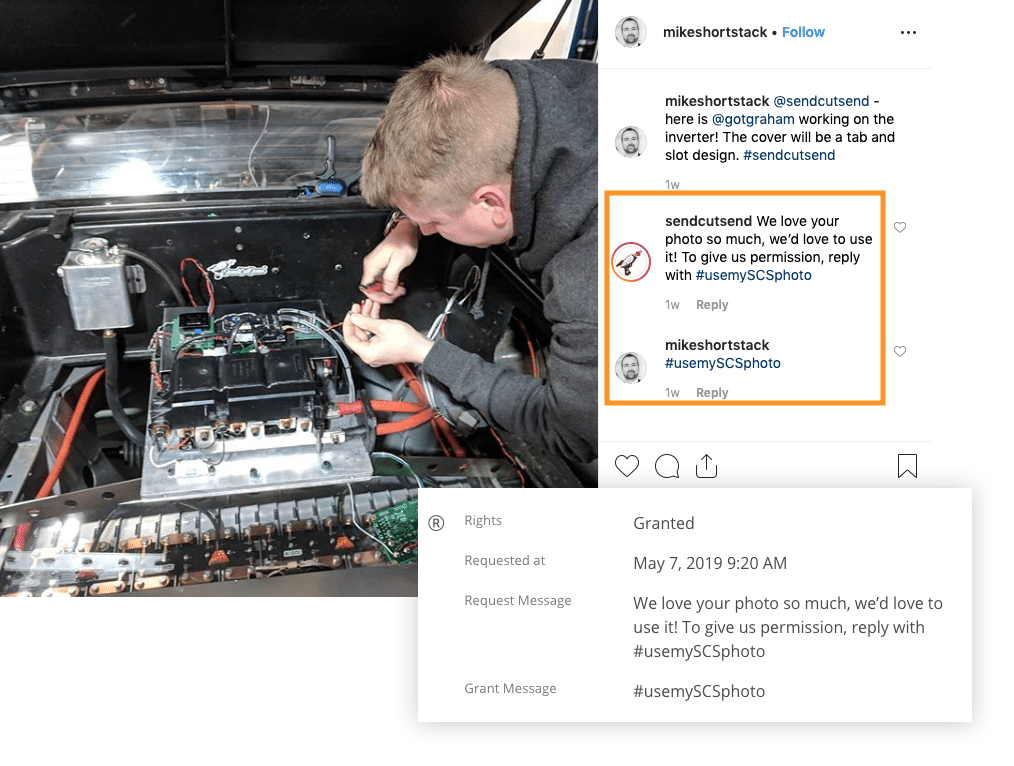
Gain permission to use participant's content using ShortStack's Rights Management tools.Lastly, if you’re requiring a hashtag as a means to collect entries, all of those hashtagged entries will be floating around social media getting you some brand awareness and also helping your brand become discoverable.The drawbacks to using hashtagged entries is similar to that of using comments and likes. Although you’ll collect that sweet, sweet UGC, there isn’t a way to keep in touch with the participants beyond the contest, i.e. losing out on valuable customer conversion potential.
Collect form submissions on a landing page or website
Benefits: high customer conversion value, high engagement, generates content Drawbacks: potential barrier to entryIn the world of lead collection, the entry form reigns king. Why? Because of its versatility and ability to collect data that can be used to convert contest participants into actual paying customers.In an entry form, you can collect any data you think will benefit your marketing. For example, collect a zip code to gauge participation by region or collect a birthdate to understand the average age of your audience. Most importantly, you can collect what marketers feel is paramount to customer conversion - an email address.

Built with Shortstack's Limited Entry Giveaway templateView and Create Your OwnWith an email address, (and an opt-in to your email list) you unlock a world of possibilities to start building a longer, engaged relationship with your new potential customer. I know this sounds a bit dramatic, but statistics showing email marketing as the dominant marketing medium are convincing.Email marketing allows you to send regular discounts and coupons, event announcements and news. And, if you collected any other info from that same contest’s entry form, you can even segment your marketing to get as tailored and personal as you like. Send them a birthday gift, coupons for specific products they indicated or even region-specific things. With an entry form, the follow-up marketing world is your customer-converting oyster.

Stay engaged by sending discounts to the entries you collectedOn top of collecting data, entry forms also collect videos and photos that can be used as UGC. Not to mention, text block fields allow you to collect photo captions, stories, and even recipes. If collecting a like or reaction is at the bottom of the engagement scale, collecting a crafted, personal story would be at the top. The more time and effort your participants invest, the more engaged they are with your brand.The one drawback to using an entry form is the apprehension participants might have when asked to hand over their personal information. For fear of being spammed or hacked, contest visitors may abandon ship at first glimpse of your entry form’s required fields. However, if your contest’s prize is luring enough, and especially if there is a promise of more contests to follow, this is a great incentive to get people to cough up their data, and even join your mailing list. Just make sure you treat that entry data with respect.There are a number of things to think about when planning your contest or giveaway - how to collect entries is just one piece of the puzzle. Remember, you can combine entry methods to capitalize on the benefits of more than one entry collection method. Sit down with your team and get creative. Just make sure to stay on course to reach your intended goal. With your eye on the prize, and making decisions accordingly, your contest will surely see success.
Create your first contest now
Get Started Today. It’s free and we don’t need your credit card.
About the author
Jessica Miller-McNatt has been with ShortStack for over a decade and has served in every role from Marketing Team Lead to Customer Success. Her journey in martech continues to fuel her fascination for what drives growth. Jessica's favorite weekends are spent in the North Georgia mountains, chasing waterfalls and exploring with her family.
Recent posts
Go back to blogGet marketing tips straight to your inbox
Launch an irresistible giveaway. Get started for free.
Join 630.000+ marketers that are boosting engagement and sales.




